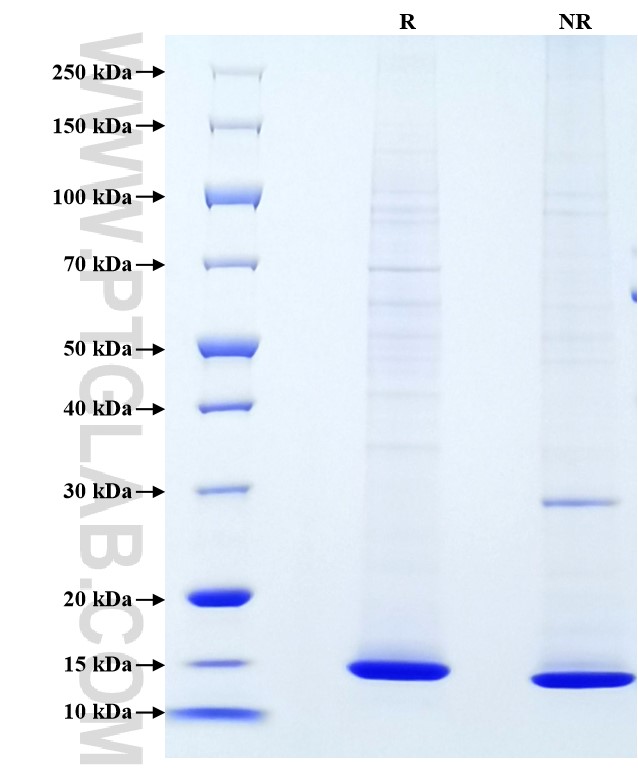Recombinant Rat Leptin (His Tag)
ED50
/
Species
Rat
Purity
>90 %, SDS-PAGE
GeneID
25608
Accession
P50596
验证数据展示
Technical Specifications
| Purity | >90 %, SDS-PAGE |
| Endotoxin Level | <1.0 EU/μg protein, LAL method |
| Biological Activity |
/ |
| Source | HEK293-derived Rat Leptin protein Val22-Cys167 (Accession# P50596) with a His Tag at the C-terminus. |
| Predicted Molecular Mass | 17 kDa |
| SDS-PAGE | 10-20 kDa, reducing (R) conditions |
| Formulation | Lyophilized from sterile PBS, pH 7.4. Normally 5% trehalose and 5% mannitol are added as protectants before lyophilization. |
| Reconstitution | Briefly centrifuge the tube before opening. Reconstitute at 0.1-0.5 mg/mL in sterile water. |
| Storage |
It is recommended that the protein be aliquoted for optimal storage. Avoid repeated freeze-thaw cycles.
|
| Shipping | The product is shipped at ambient temperature. Upon receipt, store it immediately at the recommended temperature. |
Background
Leptin is a 16 kDa adipocyte-derived hormone, and it has attracted interest in the field of obesity research due to its role in the regulation of energy balance. Leptin, secreted from adipose tissues in proportion to the fat store, acts in the hypothalamus to regulate feeding behavior. leptin has also been shown to play an essential role in tumorigenesis, tumor progression, and metastasis, due to its oncogenic, mitogenic, pro-inflammatory, and pro-angiogenic actions. Mutations in this gene and/or its regulatory regions cause severe obesity, and morbid obesity with hypogonadism. Leptin has also been linked to type 2 diabetes mellitus development.
References:
1. Arnold M. et al. (2016) Cancer Epidemiol. 41:8-15. 2. Zhang Y. et al. (1994) Nature. 37:425-32. 3. de Luis DA. et al. (2009) Minerva Med. 229-36. 4. Jiang N. et al.(2014) Drug Des Devel Ther. 8:2295-302. 5. Vansaun MN. et al.(2013) Clin Cancer Res. 19:1926-1932.
